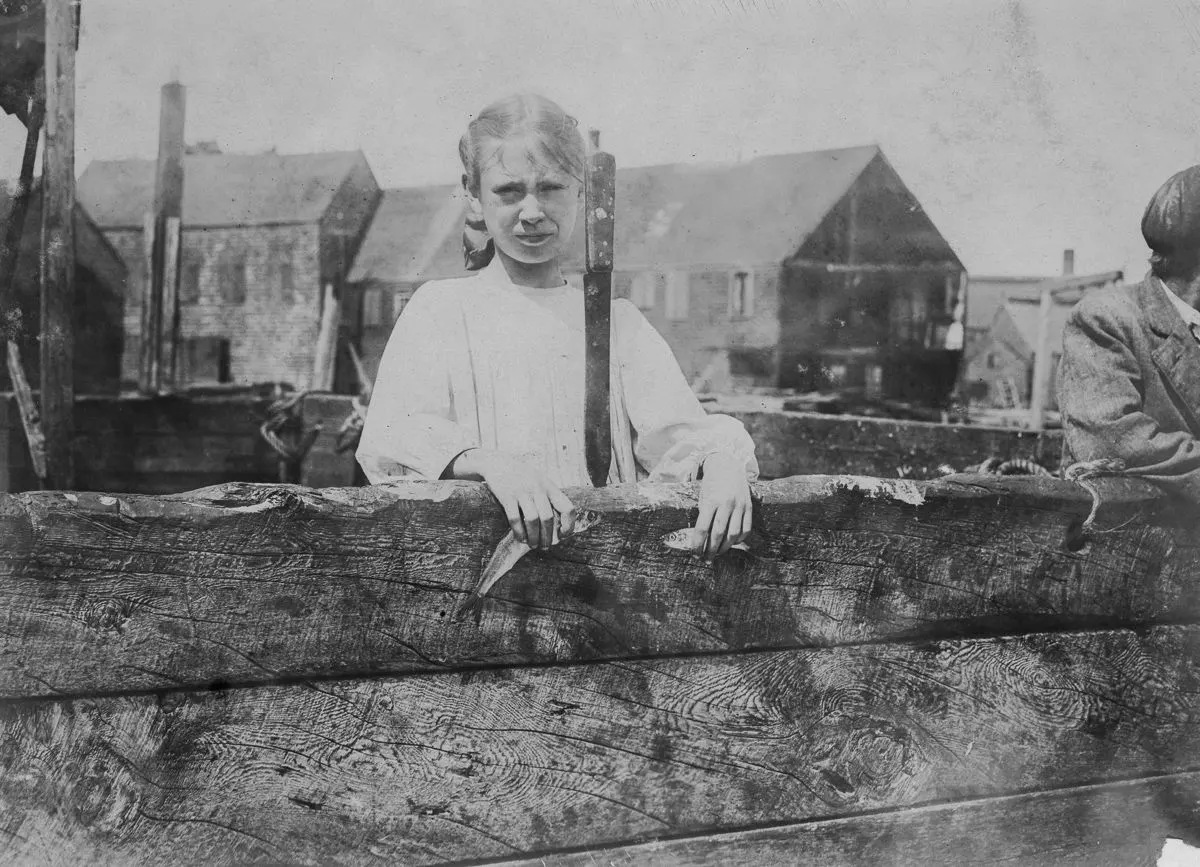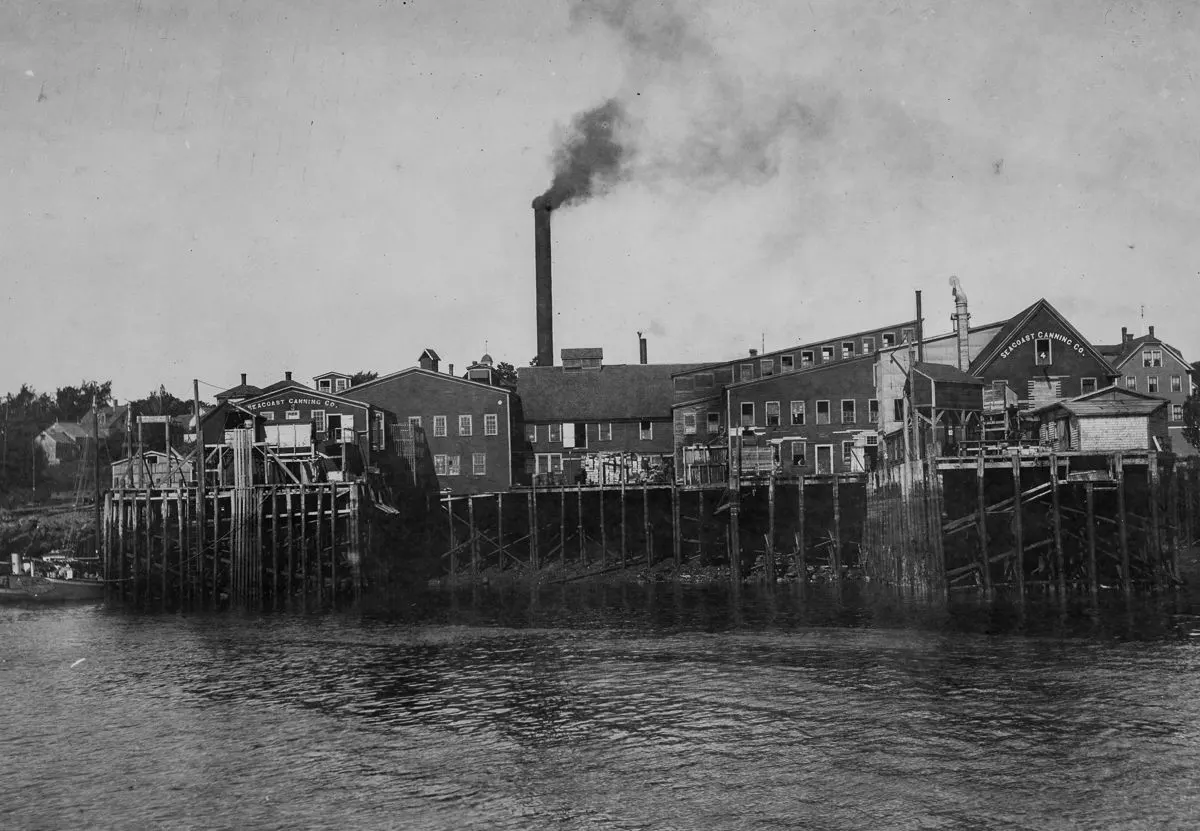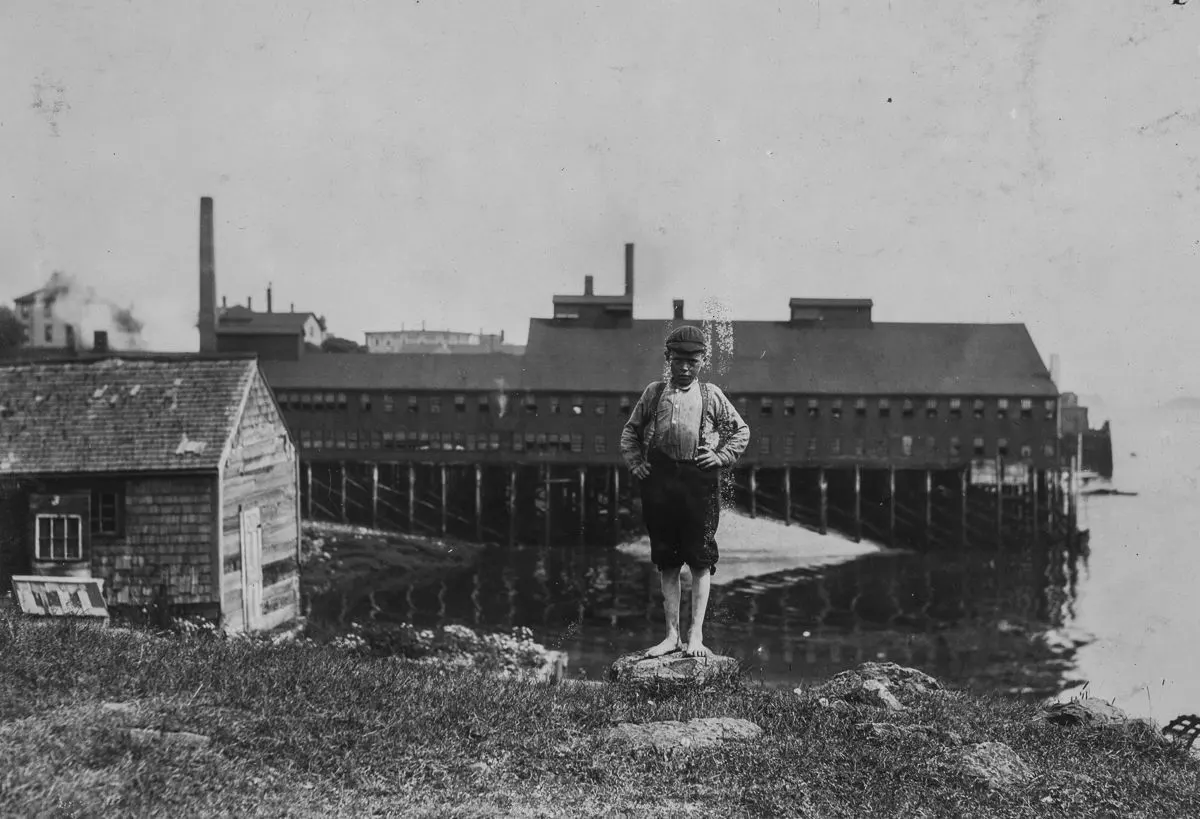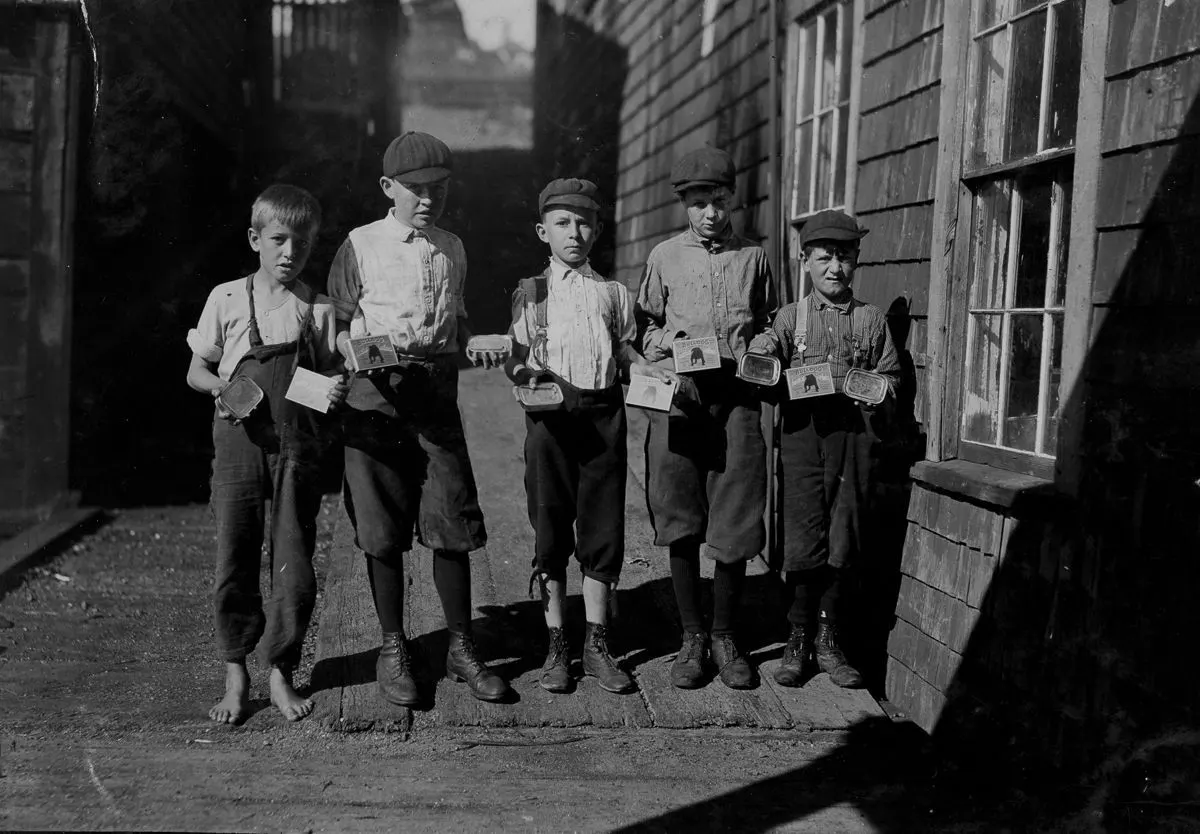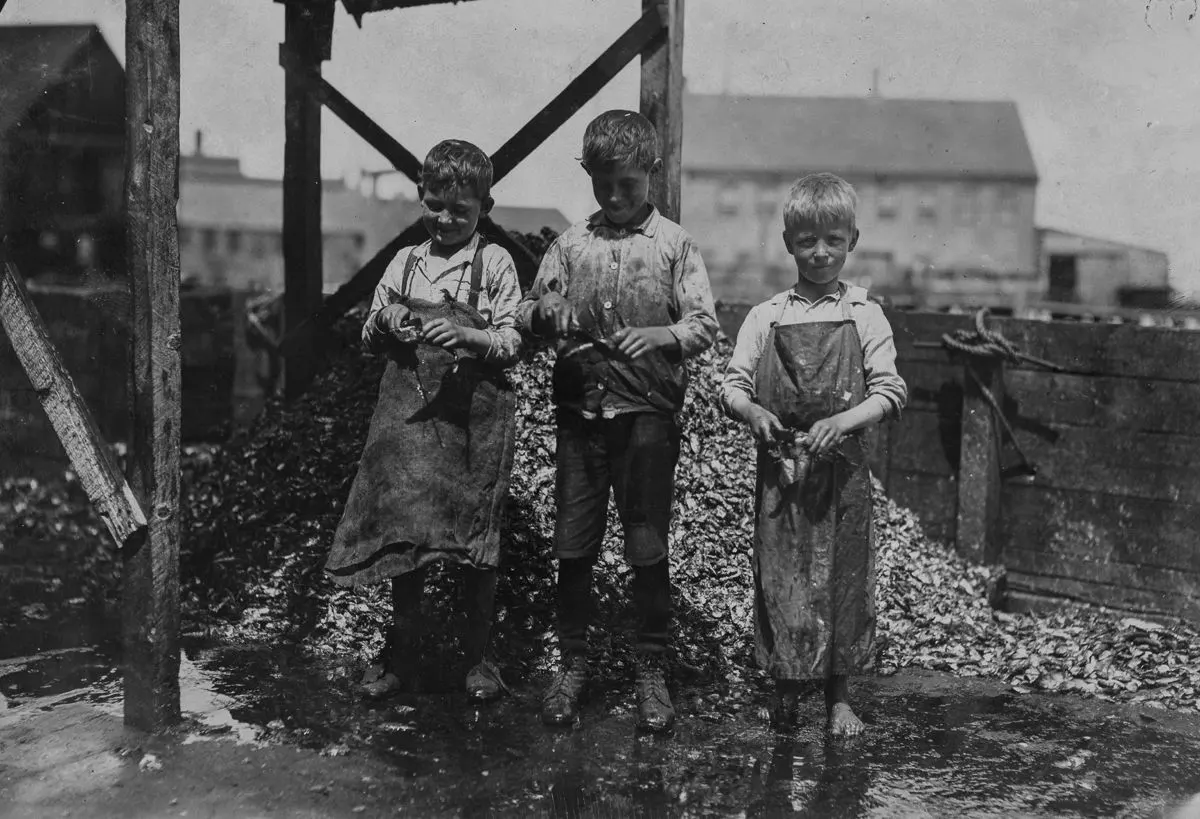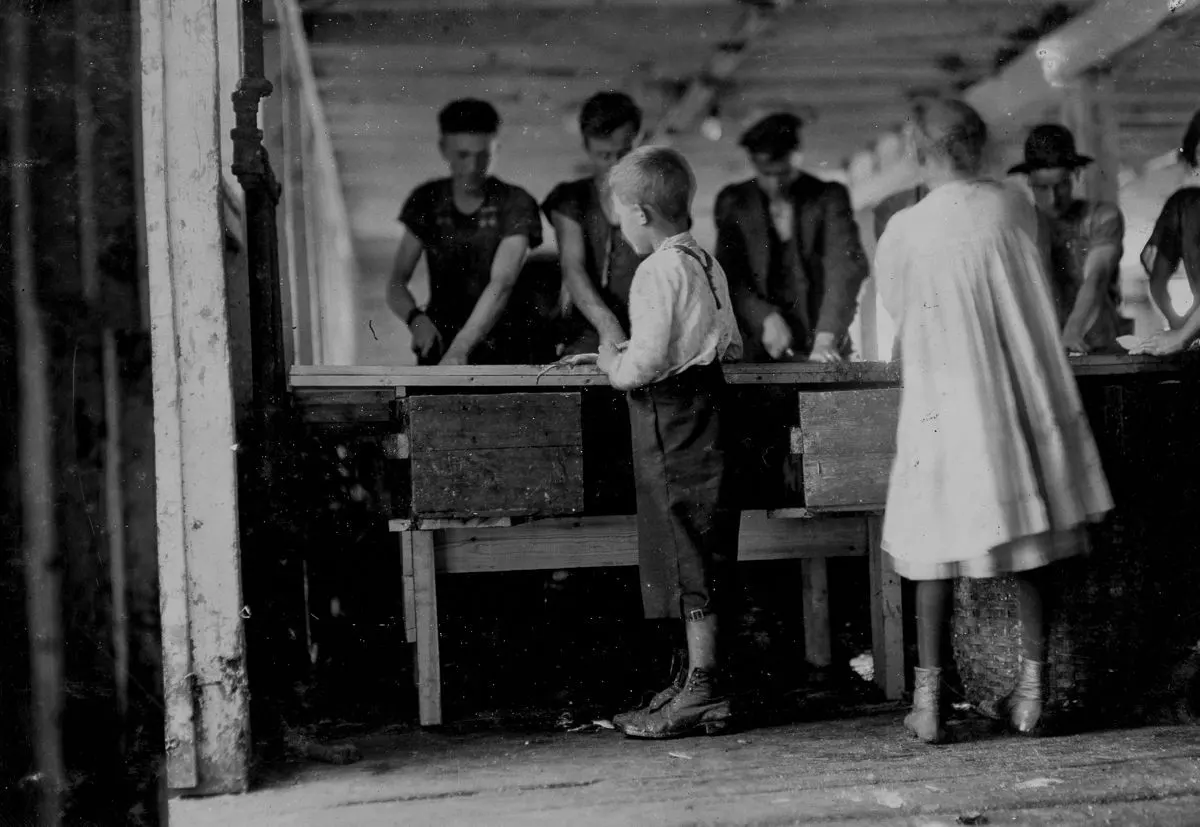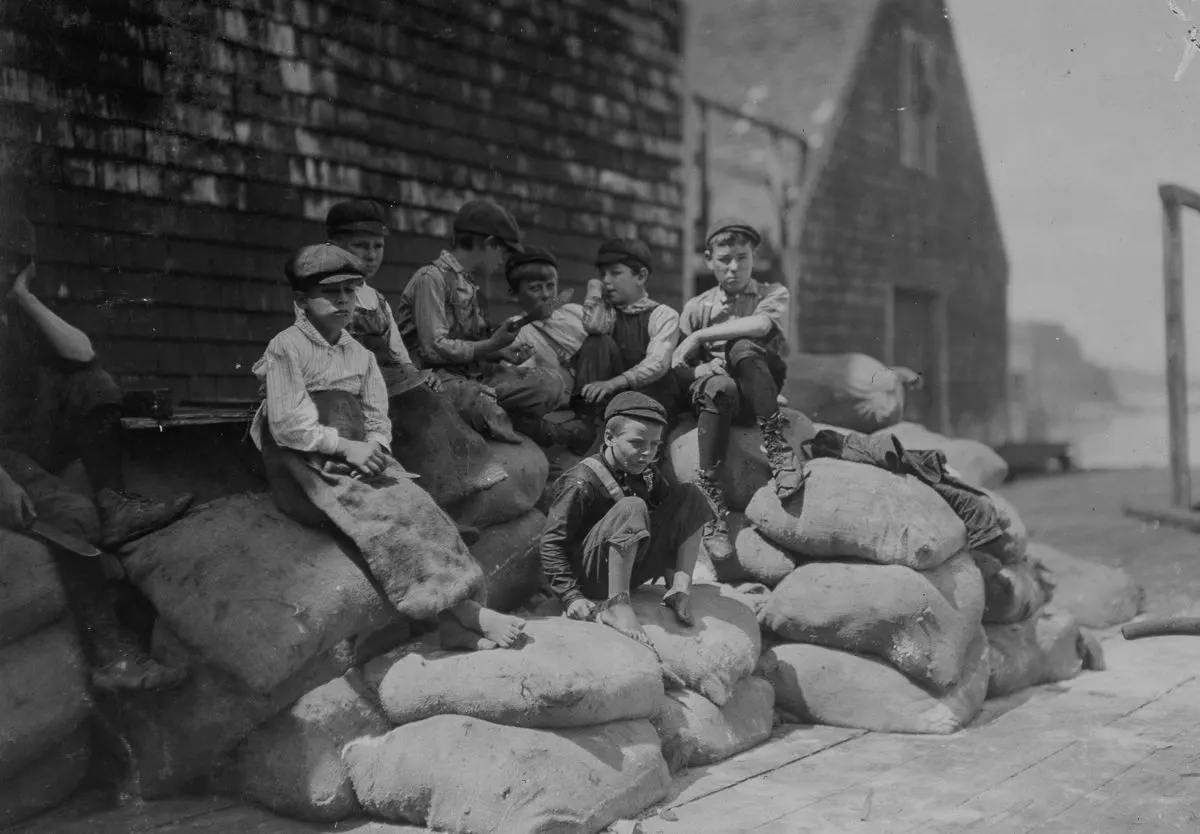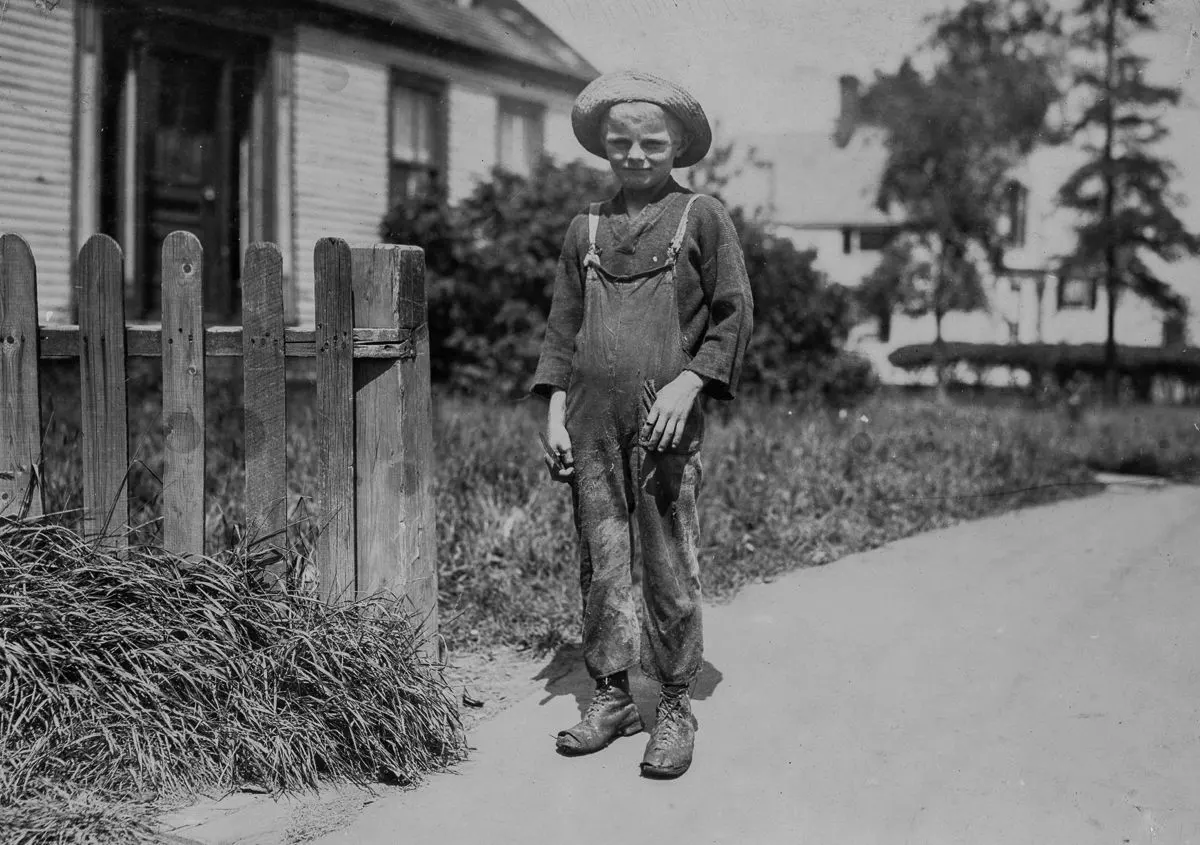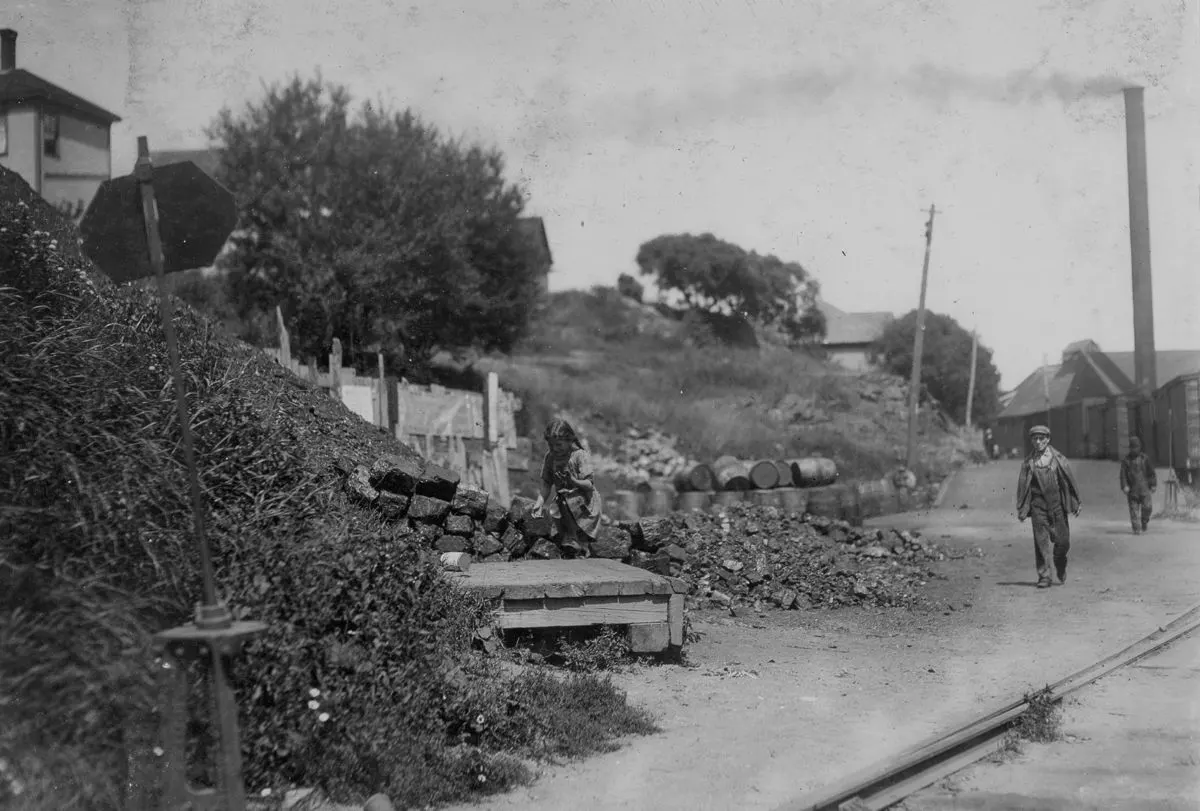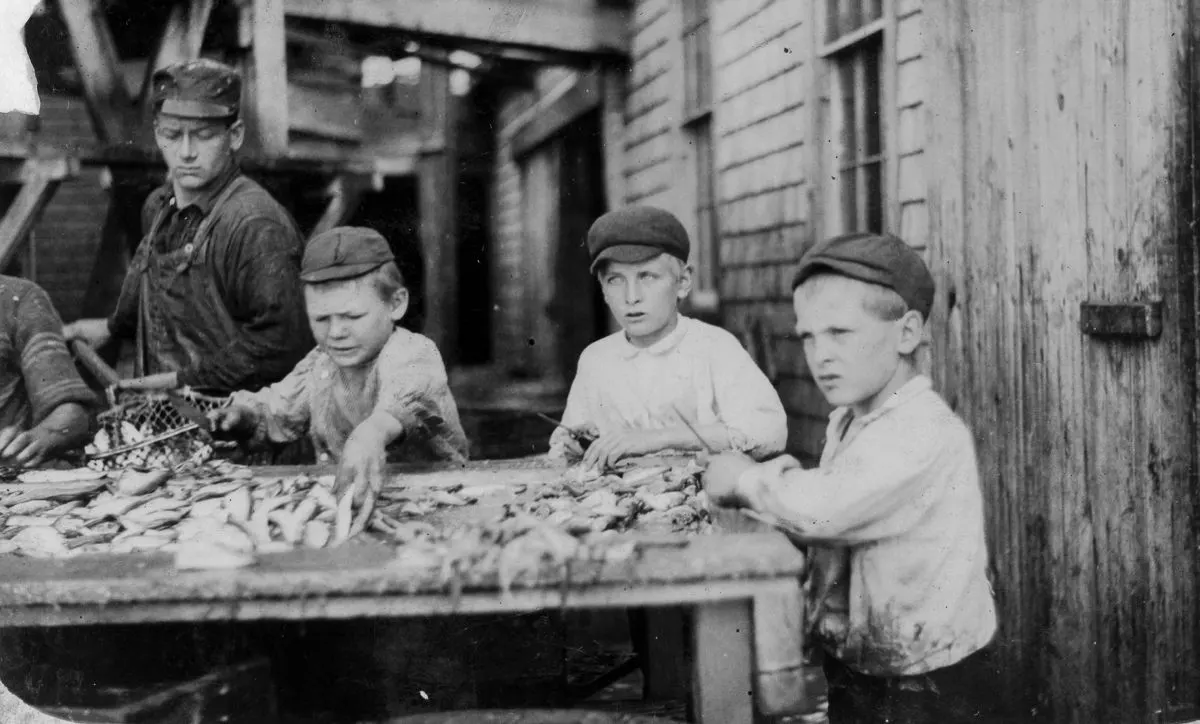He traveled around the country, interviewing thousands of children in working settings and documenting the harsh reality through photographs such as the bike messengers, newsies, miners, etc. Hine traveled to Eastport, the birthplace of the American sardine industry, where a lot of children were still working in the sardine business. The result is a lurid series of pictures. Eastport is a small town in the state of Maine, consisting of a small group of islands. Numerous children used to work there in the sardine factories as a cheap workforce. One day of sardine filleting would earn them $1,50. Many were employed as “cutters,” tasked with chopping the heads and tails off the freshly caught fish and passing them on to be canned, packed, and shipped. Work inside the factories was very demanding. Speed was required as was care not to pack part of a finger with the sardines, inconsistent goals at best. Hours were long and lasted until there were no more fish to pack. There was very little automation in the factories so each can of sardines was handled several times by workers before being finally shipped to market. Working long shifts with sharp knives in cramped, slippery quarters, and incentivized to prepare as many sardines as quickly as possible, the children Hine spoke to frequently suffered painful cuts. Hine’s images provided an accurate depiction of the heavy conditions for the children, with their sad, blank faces and wounded hands. Ultimately, the American Child Protection council used these images as evidence to successfully forge a new law prohibiting children to work in factories. In 1833 Eastport was the second-largest trading port in the country after New York City. Farms produced hay and potatoes. Industries included a grain mill, box factory, and carding mill. But the island’s economy was primarily directed at the sea. With tides of about 25 feet (7.6 m), Eastport’s spacious harbor remained ice-free year-round. The first sardine factory was built here about 1875. The population grew with the emergence of the sardine fishery and related canning businesses, which studded the shoreline by the end of the 19th century. By 1886, the town contained 13 sardine factories, which operated day and night during the season, and produced approximately 5,000 cases per week. About 800 men, women, and children worked in the plants. Eastport would be incorporated as a city on March 18, 1893. But the fishing industry would decline, and many people moved away. Indeed, the city went bankrupt in 1937. (Photo credit: Lewis Hine / Library of Congress). Notify me of new posts by email.
Δ Subscribe
